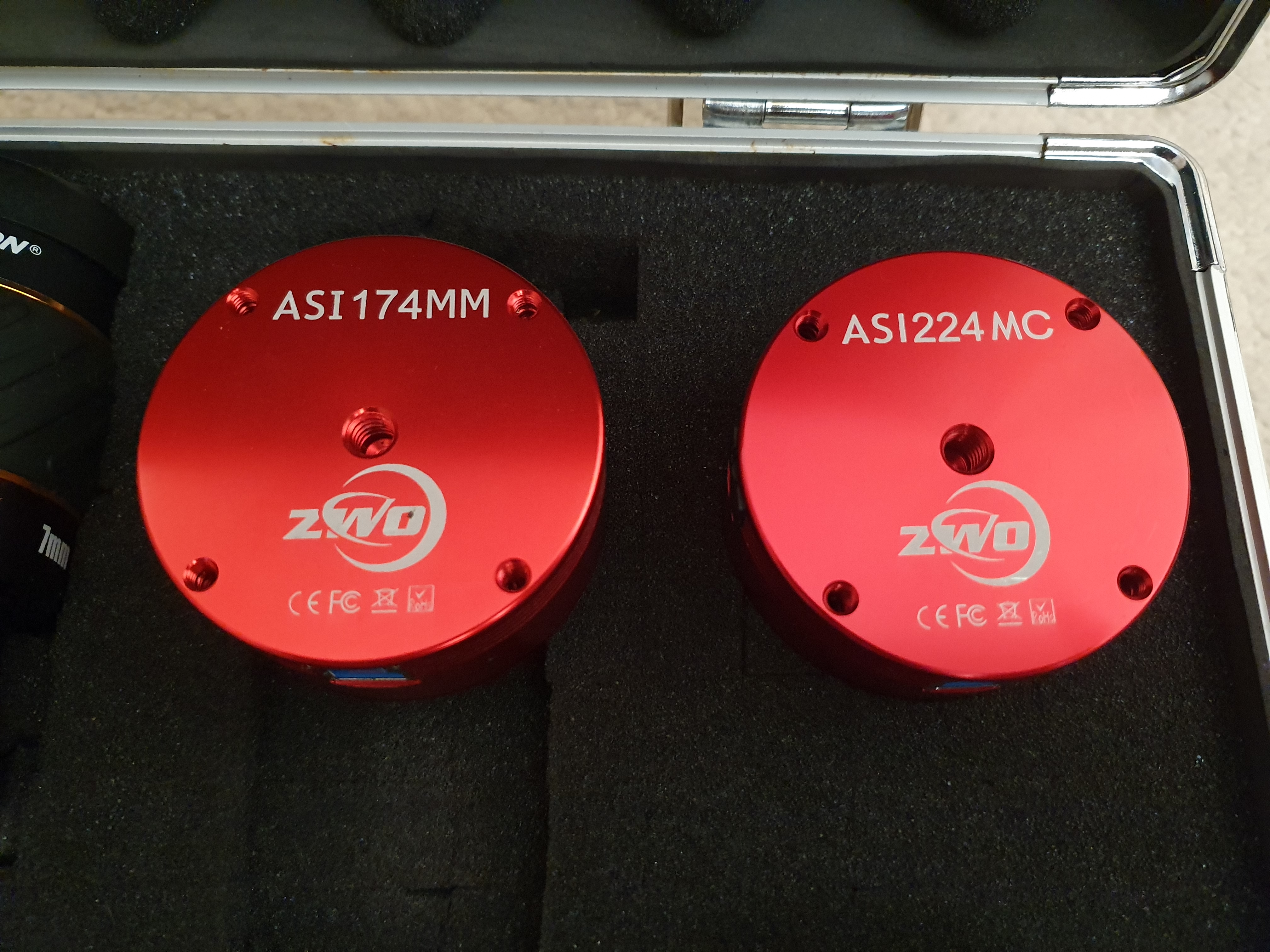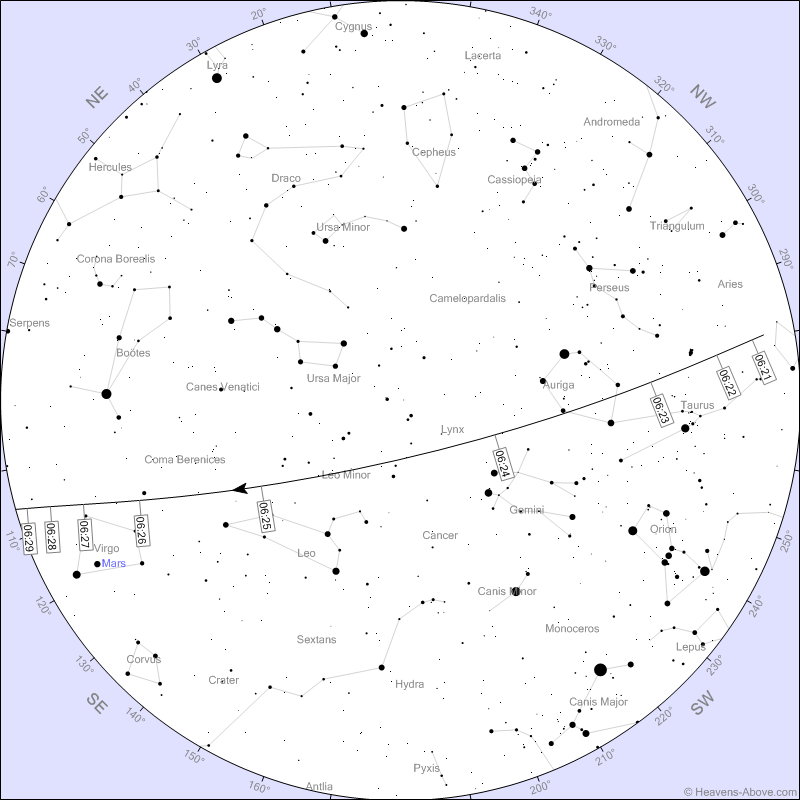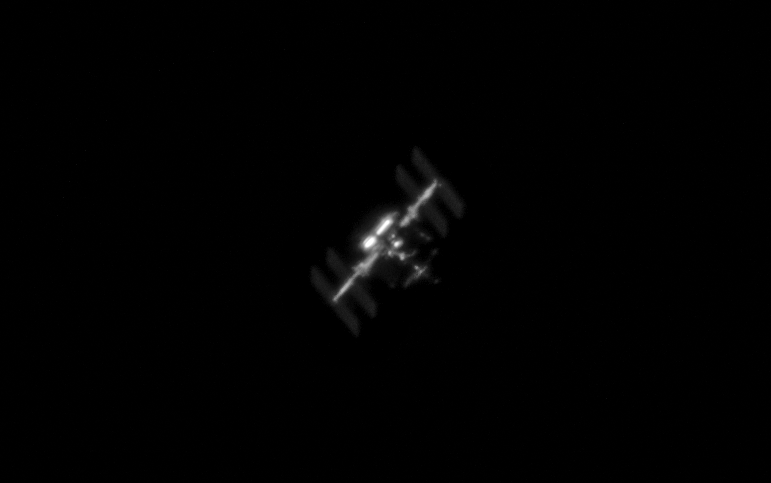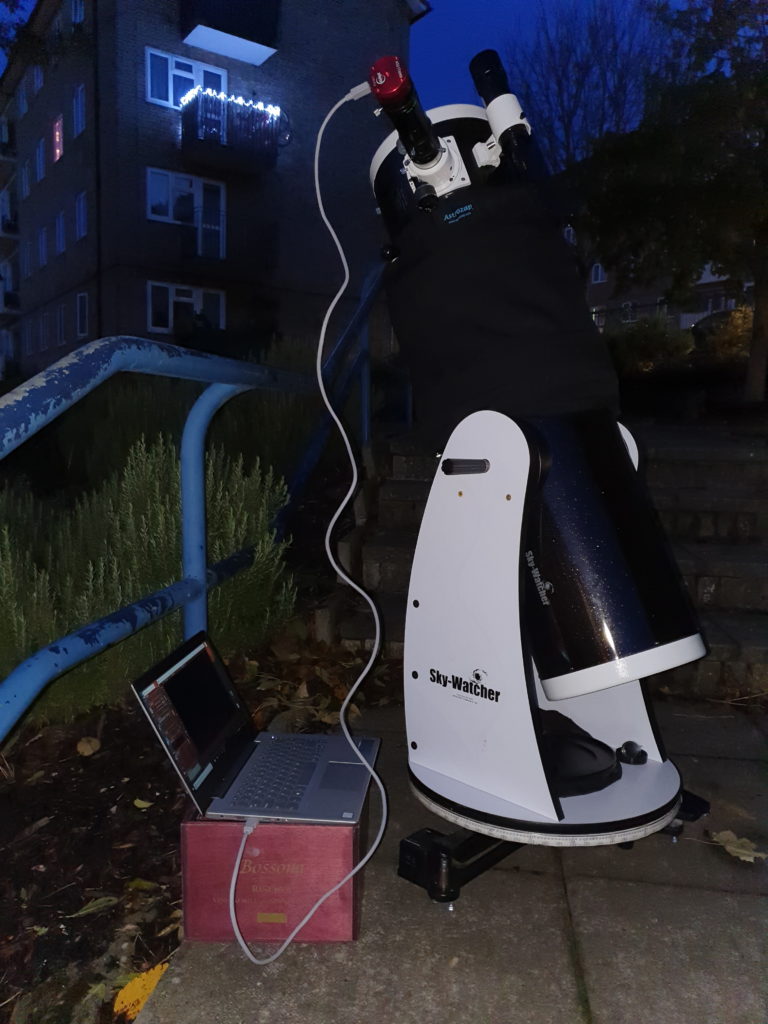ISS – Zwo ASI 174MM vs. 224MC testing (at 4800mm focal length)
Currently I have been using my well tested ASI 224MC colour camera which I really love. To me International Space Station imaging is about colours as well as details, although I know it is not as beneficial as a monochrome camera for details. Mono cameras tend to deliver more finer details, no question about it. But I am emotionally attached to colour imaging and I rather give up some of the details for colours…
But I have been given a mono 174MM camera for testing and this morning I finally had some clear period, a break in clouds – I do not want to complain too much, but October was bad. Super mega bad in terms of weather, I probably had a couple of days without cloud cover, rain and wind all the time. So I had to be patient and wait for my opportunity.
Before I show you the result from this morning, allow me to begin with some research. My good friend Philip Smith recommended me a FOV calculator website, so I did look up my current configuration with Jupiter and compared it with the 174MM setup. This site will show you, how large or small an object will look with certain setups.
This is what I found.
One thing was immediately clear, to achieve similar magnification with the 174MM camera, I had to apply a larger focal extender, in my case a TeleVue 4x powermate. It means I am using 4800mm of focal length and I had some worries about it. This is not something I have not tried before, but the result was somewhat questionable. In July 2018 I gave a try to a 4x powermate on my 10″ dobson, using my beloved 224MC camera.
I had two opportunities, first was disastrous and the second was somewhat better – see the result here. At that time I only had a laptop with usb 2.0 and I recorded so little amount of frames at that magnification that I gave up experimenting completely.
Things are different with 174MM camera for a couple of reasons.
- pixel size difference – 174MM has bigger pixels
- sensor size difference – 174MM has larger sensor
Taking all this into consideration I applied almost exactly the same camera settings today for exposure (0.777ms) and gain (241) compared to 224MC camera settings. I think the video frames were a bit underexposed, I was maybe a bit too conservative with the approach. Also sunrise was only 30 minutes away and the sky was quite bright already at 6:25am.
Forecast
Result
This is the best I could get out of the frames. Single frames did not look too good after post processing (maybe because they were too underexposed), so instead I stacked 13 consecutive frames which improved the overall result. Next time I definitely have to apply more gain for sure and I also hope I will not be as close to sunrise as today. Based on my previous experience brighter sky does not help at all.
Equipment
Skywatcher 250/1200 Flextube dobson telescope
Zwo ASI174MM camera
TeleVue 4x powermate
Baader IR-Pass filter (685 Nm)
03/11/2019






